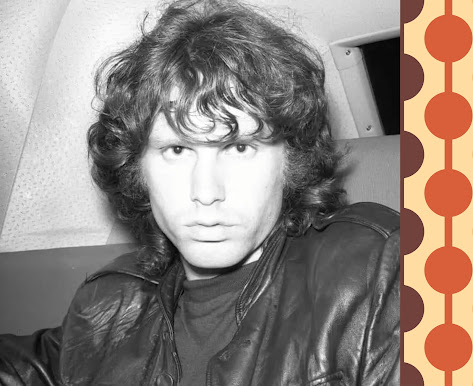THE DOORS' "PEOPLE ARE STRANGE" AND DETACHMENT FROM SOCIETY
During the 1950s and early 1960s, pop music and rock 'n' roll were the
two most popular genres of music in the US and England. During this period,
they played a collective entertainment role.
They brought young people together and celebrated sociality in general.
This music also touched the personal dimension. Indeed, it accompanied
individuals' moments of joy and melancholy.
At the turn of the two decades, the themes of the lyrics were mainly
about personal sadness caused by romantic disappointment or the happiness of
romantic relationships.
From 1963 onwards, several artists changed this landscape when two new
musical forms emerged and gained widespread public acceptance. The first was
the singer-songwriter format, inspired by folk music and popularized by Bob
Dylan; the second was the pop-rock of the Beatles.
From then on, numerous different artists and genres flourished within it
during the 1960s.
This musical evolution also brought greater complexity to the lyrics
accompanying the songs, which began to address deeper social issues.
This is evident in "People Are Strange" (link here), a song from The Doors' second LP, "Strange Days", released in September 1967. Here, Jim Morrison's lyrics express the feeling of being uncomfortable with the presence of other people at certain times in life.
Through his words, the poet/singer expands this theme to embrace society
as a whole, offering bitter reflections. Above all, the difficult and sometimes
contradictory relationship between the individual and those around him/her
emerges.
Morrison was not the only artist to explore such themes in his work.
Around a year earlier, a songwriter with strong folk influences and a
fascinating style also recorded a song with similar themes.
It’s Fred Neil's famous song "Everybody's Talking" (link here), released in December 1966 as part of the album "Fred Neil". While Nilsson's 1968 version (link here) was much more successful, the original is characterized by the naked emotion lacking in Nilsson’s more commercial and famous arrangement.
The essential musical arrangement of Fred Neil's song is handled well in
its simplicity, featuring an airy acoustic guitar arpeggio in the foreground,
accompanied by double bass and the author's passionate voice.
As well as being a beautiful song, the lyrics have several similarities with
those of "People Are Strange".
The most significant of these is the sense of being an outsider within
society. This is clearly evident in the lyrics of "Everybody's Talking":
“Everybody's talking at me / I don't hear a word they're saying / Only the
echoes of my mind”.
The same idea is expressed in the words “People stoppin’, starin’ / I
can't see their faces / Only the shadows in their eyes”.
There are clear similarities with the sense of alienation from community
also expressed by Morrison in 'People Are Strange', which highlights the
proliferation of reflective lyrics and problematic themes in 1960s music.
Alongside the developments and setbacks experienced by contemporary
music in the following decades, the relationship between the individual and
society will be analyzed and explored from additional perspectives.
These themes have their roots in the 1960s, particularly in the work of
highly influential artists such as Jim Morrison with "People Are
Strange".
P.S.: My book "The Doors Through Strange Days"- The most comprehensive journey ever made through The Doors' second LP, is available on Amazon.com, .uk, .mx, .it, etc.
Here’s a link:




Comments
Post a Comment